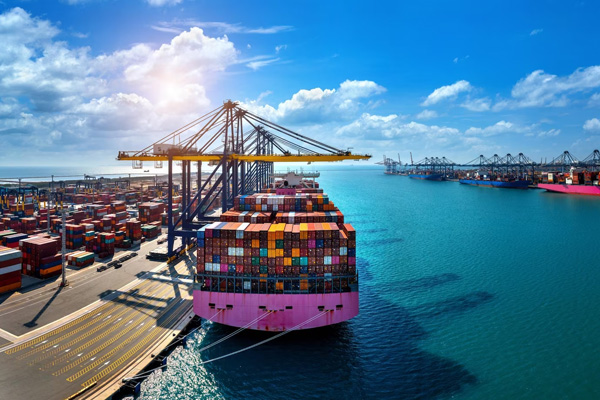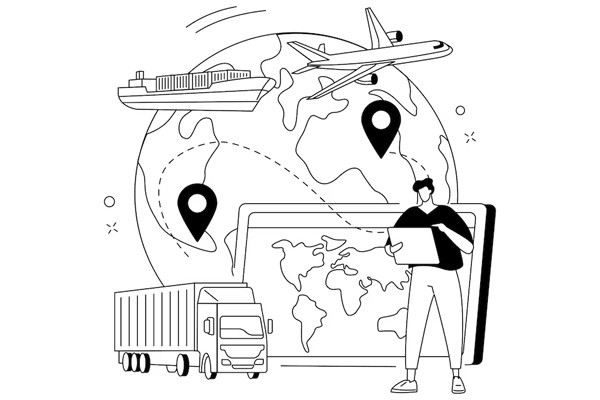If you’re considering DDP shipping and the world of international product importing, this is your backstage pass into DDP incoterms. With over two decades of experience under my belt, having overseen the importation of an impressive tally of 5,000 (or maybe even 10,000) containers, I’ve got some revelations to share. Today, we’re diving into the enigma of shipping DDP, its concealed pitfalls, and how it might be taking a toll on your business’s bottom line.
What is DDP Shipping
DDP (Delivery Duty Paid) is an international trade term or Incoterm that signifies a shipping arrangement where the seller or exporter takes full responsibility for the shipment’s transportation, including arranging shipping details, covering transportation costs, customs duties, taxes, and any other charges up until the goods are delivered to the buyer’s specified location.
By shipping Delivery Duty Paid, the seller not only ensures that the products are transported to the buyer’s destination but also handles the associated importation processes and costs. This includes managing the freight forwarding, customs clearance, and any payments required for duties and taxes in the buyer’s country.

Benefits of Shipping DDP
There are a few reasons you might be using DDP shipping terms. But the primary reason is because it offers convenience and simplicity in international trade transactions. Here are some key reasons why businesses and individuals choose DDP shipping:
- Ease of Use: DDP shipping is straightforward for the buyer. The seller or exporter takes full responsibility for the shipment, including arranging transportation, handling customs procedures, and paying all import duties and taxes. This simplifies the process for the buyer, as they don’t need to worry about logistics and customs clearance.
- Reduced Risk: With DDP shipping, the seller assumes the risk and cost associated with transporting the goods. This can be appealing to buyers who want to minimize their exposure to potential shipping-related problems, such as delays, damage, or loss.
- Predictable Costs: Buyers know the total cost upfront, as it includes not only the cost of the goods but also all shipping and importation expenses. This predictability can be advantageous for budgeting and financial planning.
- Global Reach: DDP shipping allows businesses to expand their market reach by making it easier to sell products internationally. Buyers in different countries often prefer DDP terms because they don’t have to deal with customs or import duties.
- Competitive Advantage: Offering DDP shipping can be a competitive advantage for sellers. It can attract international buyers who appreciate the simplicity and convenience of not having to handle shipping and customs procedures themselves.
Is DDP Shipping Worth It
Before we plunge into the intricacies of DDP, let’s unravel the mystery behind Incoterms. These shipping terms are more than just industry jargon; they hold the key to the transfer of ownership along the supply chain. Your understanding of these terms can significantly impact your business’s financial health.
On the surface, it sounds like the ultimate convenience – the factory, in cahoots with their freight forwarder, takes charge of every shipping detail, covering duties, tariffs, and those pesky fees. But, here’s the twist: if the factory ends the shipment at the port, you might find yourself grappling with the task of transporting the goods to your doorstep.
Now, let’s get to the crux of the issue – hidden costs. DDP shipping provides the perfect cloak for factories to weave hidden profits into your product costs. The lack of transparency in their collaboration with freight forwarders means you might never get the full picture of costs, such as container expenses and duties.

The Drawbacks of DDP Shipping Terms
Delving into the heart of the matter, let’s talk about the issues I have with DDP shipping. On the surface, it sounds like the ultimate convenience for all of the reasons we mentioned earlier. But are you’re probably not getting the best value with DDP incoterms.
Now, let’s get to the crux of the issue – the hidden costs. DDP shipping provides the perfect cloak for factories to weave hidden profits for themselves into your product costs. The lack of transparency in their collaboration with freight forwarders means you might never get the full picture of costs, such as container expenses and duties.
The factory, in cahoots with their freight forwarder, takes charge of every shipping detail, covering duties, tariffs, and those pesky fees. But, here’s the twist: if the factory ends the shipment at the port, you might find yourself grappling with the task of transporting the goods to your doorstep.
Crunching the Numbers with a DDP Shipping Vs ExWorks or FOB Example
I cover this example in the video shown in this article. But let’s break it down further with an example. The factory quotes you $7.50 per unit for DDP shipping. To turn a profit, you need to sell the product for $29.99, factoring in Amazon’s fees, including a 15% commission, referral fees, and storage costs. This results in a total unit cost of $19.50 and an estimated profit of $10.49 per unit.
Now, consider the ExWorks or FOB (Free on Board) alternative. Here, you take control of the shipping process. Your chosen freight forwarder provides you with a breakdown of all shipping costs, duties, and tariffs. You know exactly where your shipment is, and there’s minimal guesswork.
In our example, by opting for ExWorks, the factory quotes you $5.75 per unit. After factoring in shipping costs, duties, and tariffs, your landed cost is estimated at $7.03. That’s a saving of $0.47 per unit compared to DDP. That’s extra margin and profit back into your wallet instead of the factories.

The Bottom Line with Shipping DDP
When you use DDP shipping, you’re essentially allowing the factory to bury some of its profit within your product costs. However, by opting for ExWorks or FOB, you gain transparency and control over expenses, potentially increasing your profit margins.
In our scenario, the estimated profit margin increased to 36.55%, with an estimated profit of $10.96 per unit – a noticeable improvement compared to DDP.
In the end, while DDP shipping may seem like the path of least resistance, it’s crucial to weigh the convenience against the potential hidden costs. By gaining control and transparency in your shipping process, you can maximize your profits and ensure they end up in your pocket, not someone else’s.
Whether you’re a seasoned importer or just starting, understanding your shipping terms can make all the difference. Leave your questions and thoughts in the comments below, and don’t forget to hit that like button if you found this breakdown helpful. Here’s to profitable importing!
